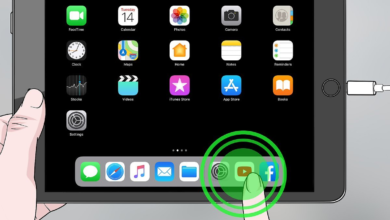
Choosing the perfect GPU can make all the difference in your gaming experience or professional workflow. Whether you’re a competitive gamer chasing high frame rates or a creative professional handling 3D rendering and video editing, the right graphics card ensures smooth performance and stunning visuals. With so many options available from budget-friendly models to high-end powerhouses knowing what to look for is key. This guide will help you navigate Perfect GPU specifications, brand differences, and performance needs so you can make the best choice for your setup.
The perfect GPU depends on your specific requirements, including resolution, refresh rate, software compatibility, and budget. Gamers need to consider factors like ray tracing and upscaling technologies, while professionals should prioritize VRAM and compute performance. By understanding these aspects, you can avoid overspending on unnecessary features or ending up with an underpowered card.
How to Pick the Perfect GPU for Gaming or Work
Understanding GPU Basics
Before diving into specific models, it’s essential to understand what a Perfect GPU does and how it differs from a CPU. A Graphics Processing Unit (GPU) is designed to handle parallel tasks, making it ideal for rendering images, videos, and complex computations. While a CPU manages general computing tasks, the GPU specializes in accelerating graphical workloads, which is why it’s crucial for gaming, video editing, 3D modeling, and machine learning.
Key Factors to Consider When Choosing a GPU
Performance Needs
The first step in selecting the Perfect GPU is determining your primary use case. For Gamers If you play competitive esports titles like Valorant or CS GO, a mid-range GPU like the NVIDIA RTX 4060 or AMD RX 7600 will suffice. However, for AAA games at 4K resolution with ray tracing, high-end options like the RTX 4080 or RX 7900 XTX are better choices. For Content Creators & Professionals Tasks like video editing, 3D rendering, and AI development benefit from GPUs with large VRAM and CUDA cores (NVIDIA) or Stream Processors (AMD). The NVIDIA RTX 4090 or AMD Radeon Pro W7800 are excellent for heavy workloads.
Budget Considerations
Perfect GPU range from budget-friendly (200)toenthusiast−grade(2000+). Setting a budget early helps narrow down options Entry-Level (200−400) Good for 1080p gaming (e.g., RTX 3050, RX 6600). Mid-Range (400−800) Ideal for 1440p gaming (e.g., RTX 4070, RX 7800 XT). High-End ($800+) Best for 4K gaming and professional work (e.g., RTX 4090, RX 7900 XTX).
Compatibility & Power Requirements
Before purchasing a Perfect GPU, verify that your system meets its physical and power demands high-end cards like the RTX 4090 may require a spacious case and a robust 850W+ PSU, while mid-range GPUs often work with 550W-650W units. Check your motherboard’s PCIe slot version (ideally 4.0 or newer for full bandwidth) and ensure your chassis has enough clearance for the card’s length and cooling design. Don’t forget about power connectors modern GPUs often need 8-pin or 16-pin (12VHPWR) cables, so confirm your PSU has the right ports. Overlooking these details can lead to bottlenecks, crashes, or even hardware damage.
VRAM (Video RAM) Requirements
VRAM is a critical factor in GPU performance, especially for high-resolution gaming and professional workloads. For 1080p gaming, 8GB of VRAM is generally sufficient for most modern titles, though some newer games may benefit from 10-12GB at maximum settings. If you’re gaming at 1440p or 144Hz, 12GB ensures smoother performance with high-quality textures, while 4K gaming and ray tracing demand at least 16GB to prevent stuttering and frame drops. Content creators working with 3D rendering, video editing, or Artificial intelligence applications should prioritize GPUs with 16GB or more
Cooling & Thermal Performance
Effective cooling is crucial for maintaining your Perfect GPU performance and longevity, especially under heavy workloads. Air-cooled designs with dual or triple fans offer a balance of affordability and efficiency, making them ideal for most gaming PCs. For enthusiasts pushing their GPUs to the limit, liquid-cooled models provide superior heat dissipation, enabling higher clock speeds and quieter operation. Thermal performance also depends on case airflow ensure your PC has sufficient intake and exhaust fans to prevent heat buildup. Monitoring tools like MSI Afterburner or HWInfo can help track temperatures, with 70-85°C being a typical safe range under load.
Future-Proofing Your GPU
Prioritize Higher VRAM Capacity
As games and creative software become more demanding, VRAM requirements continue to rise. Opting for a GPU with at least 12GB of VRAM ensures compatibility with future high-resolution textures and complex workloads. For 4K gaming or professional 3D rendering, 16GB+ is ideal to avoid premature obsolescence.
Choose a GPU with Advanced Upscaling Technologies
Technologies like NVIDIA DLSS, AMD FSR, and Intel XeSS use AI to boost performance without sacrificing visual quality. Since these features are increasingly adopted in new games, selecting a GPU that supports them helps maintain high frame rates even as graphics demands grow.
Opt for Strong Ray Tracing Performance
Ray tracing is becoming standard in modern AAA games and rendering software. Investing in a GPU with dedicated RT cores (NVIDIA) or strong ray acceleration (AMD) ensures you can enjoy realistic lighting and shadows as more titles adopt this technology.
Consider PCIe 4.0 or 5.0 Support
While current GPUs don’t fully saturate PCIe 4.0 bandwidth, future models and games may leverage faster interfaces. A PCIe 4.0-ready GPU (or PCIe 5.0 if available) ensures compatibility with next-gen motherboards and avoids potential bottlenecks.
Evaluate Power Efficiency and Cooling
Future software updates and game optimizations may push GPUs harder, increasing power draw and heat output. Choosing a card with efficient cooling (triple-fan or liquid-cooled designs) and a modern architecture (like NVIDIA’s Ada Lovelace or AMD’s RDNA 3) helps maintain stable performance over time.
Check for Ongoing Driver Support
Some GPU manufacturers drop driver updates for older models sooner than others. Research brands known for long-term driver support (NVIDIA and AMD typically lead) to ensure compatibility with future games and software.
Read More: Launch a Side Hustle with Zero Tech Experience
Conclusion
Selecting the perfect GPU ultimately comes down to understanding your specific needs and balancing performance with budget. Whether you’re a gamer seeking buttery-smooth frame rates or a professional requiring powerful rendering capabilities, the right graphics card can dramatically enhance your experience. By carefully considering factors like resolution requirements, VRAM capacity, power consumption, and future-proofing features, you can make an informed decision that delivers long-term value. Remember that the most expensive option isn’t always necessary what matters is choosing a GPU that aligns perfectly with your use case.
As technology continues to evolve, the perfect GPU today should remain capable for years to come. Keep an eye on emerging technologies like advanced ray tracing, AI upscaling, and improved power efficiency when making your selection. Whether you opt for NVIDIA’s feature-rich offerings, AMD’s value-packed alternatives, or Intel’s growing Arc lineup, prioritizing your unique needs will ensure satisfaction with your purchase. With the Perfect GPU in your system, you’ll be equipped to handle everything from cutting-edge games to demanding creative workloads with ease and efficiency.
FAQs
How much VRAM do I need for gaming?
For 1080p, 8GB is sufficient; 1440p requires 12GB, and 4K gaming benefits from 16GB+.
Is NVIDIA or AMD better for gaming?
NVIDIA leads in ray tracing and DLSS, while AMD offers better value in mid-range cards.
Can my power supply handle a high-end GPU?
Check your PSU’s wattage high-end GPUs often need 750W or more.
Should I buy the Perfect GPU or a previous-gen model?
If budget allows, newer GPUs offer better features, but last-gen cards can be cost-effective.
Do I need liquid cooling for my Perfect GPU?
Only for extreme overclocking; most air-cooled GPUs perform well with proper airflow.











